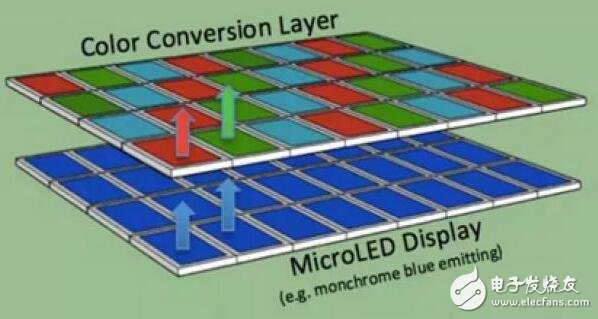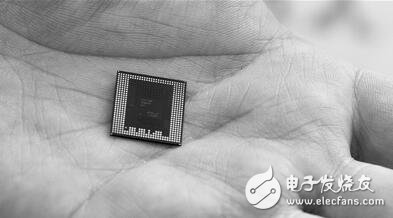Any turmoil in Apple may become a hot topic in the technology circle. There are rumors that Apple's next-generation iPhone will use OLED display, which has set off a wave of OLED investment at home and abroad, so that the original OLED is the first to glow in the circle. Two years ago, Apple acquired LuxVue, and the Micro-LED, which has been silent for many years, was able to seal the dust and began to show the apple with its aura. Can Micro-LEDs challenge mainstream LCDs and emerging OLEDs?
Sony launches Micro-LED TV againApple is just a newcomer to Micro-LED, and Sony is the veteran of the technology. Sony has researched Micro-LED related technology very early, and launched "Crystal LED Display" at the International Consumer Electronics Show in 2012, which is the first to apply Micro-LED technology in the field of consumer electronics.

However, in the following four years, Sony did not mention Micro-LED TVs, and no related products were announced. Why is Sony's attitude toward Micro-LED technology around 2012 different? LEDinside analyst Philip Chang pointed out that in theory, the LED size can reach hundreds of microns, chip and package is not a problem, but in terms of the technical level of the year, to do a FHD Crystal LED Display means to hit 6.22 million LEDs, efficiency and yield are too low, and the cost is too high. It is impractical to achieve large-scale marketization.
Four years later, Sony did not stop. Under the stimulation of Apple, Sony launched the Crystal series CLEDIS (Crystal LED Integrated Structure) on Infocomm in June. The product is mainly called "modular stitching", but the single The number of LEDs has been greatly reduced, and the PPI has been reduced from the original 40 to 15. This makes mass production possible, and Sony confidently claims that CLEDIS will be mass-produced in 2017.
Liu Zhaojun, an associate professor at the School of Electronics and Information Engineering at Sun Yat-Sen University, believes that Sony is still using a stupid way to splicing one LED or one thousand and one thousand LEDs at the same time. The transfer cycle and production time are relatively long, and the alignment time is long. Not suitable for mass production. If mass production is to be achieved, it is necessary to achieve high-volume, high-precision, high-yield transfer. Tu Menglong, director of R&D's R&D, also pointed out that only the direct rate is 100%, and thousands or even hundreds of millions of LEDs may not have a dead point. This is very difficult and requires technical maturity, at least not mature next year, so Sony is unlikely to achieve mass production in the next year.
Micro-LED is not popular with domestic manufacturersApple's entry into Micro-LED not only accelerated the progress of Sony's mass production, but also aroused the interest of domestic LED manufacturers. Zhang Jinfang, CEO of JiChuang North, revealed that domestic LED manufacturers have begun to develop Micro-LED technology. It is understood that last year, Liard launched the AMD P0.9mm HD seamless wall, which is the first LED display on the market to achieve mass production of less than 1 mm pitch, but mainly used in indoor monitoring. The field, unlike Apple and Sony, focuses on wearable and large-screen TV.
Although domestic LEDs have formed a certain scale in the commercial market, domestic LED equipment has accelerated the process of localization of LEDs. However, most domestic LED manufacturers have small revenues. Currently, they pay more attention to the LED commercial market itself. For micro-LEDs like this. There are relatively few forward-looking technology investments, and there are not many discussions on Micro-LED in domestic LED-related conferences. Why are domestic LED manufacturers not enthusiastic about Micro-LED?

Tu Menglong said that Apple and Sony's Micro-LED are cut from the chip angle. Domestic small-pitch LEDs are from the perspective of the display screen. Although they are all made of small-pitch LEDs, the scales of the two are different. There is no enterprise in the domestic LED industry that can vertically integrate the entire industry chain. Each enterprise has its own focus on one chip, and the chips are used as chips, and the package is only used for packaging and application. Moreover, most of the small-pitch LEDs are now concentrated in the application layer, and have not yet extended from the application layer to the upstream industry chain, and have not reached the chip layer. At present, the small-pitch LED of domestic energy production is P1.2~1.5 mm, and the smallest is P0.9 mm.
Both Apple and Sony Micro-LEDs use the normal CMOS integrated circuit manufacturing process to make LED display driver circuits, and then use MOCVD machines to fabricate LED arrays on integrated circuits, thus achieving a smaller micro-display size. Up to 100 microns, domestic small-pitch LEDs are an order of magnitude worse than Apple and Sony's Micro-LEDs.
More importantly, this Micro-LED heat is mainly led by Apple. Apple's Micro-LED technology is still in the process of tackling the road, and there is still a long way from industrialization. Liu Zhaojun believes that the current Micro-LED is just like the LCD 30 years ago. It needs to improve the industry chain to reduce costs and increase production capacity. For domestic manufacturers, at present, the future of Micro-LED is not clear, it will be based on tracking, with the existing technology and patents for layout, and when it really flows into the Micro-LED market, it needs to look at the technology of Apple and Sony. Breakthroughs and market trends.
Can Micro-LEDs challenge LCDs and OLEDs?Micro-LED combines low power consumption, high brightness, ultra high resolution and color saturation, fast response, ultra power saving, long life and high efficiency. Compared with LCD and OLED, Micro-LED brightness And the color saturation advantage is very obvious. Tu Menglong pointed out that the brightness of the indoor screen of Micro-LED can reach 1000~2000nit, and the brightness of LCD screen can only reach several hundred nit. In addition, Micro-LED can use three primary colors or four primary colors, and the color area is wider and the display effect is better.
At present, Micro-LED can form two major application directions, one is the wearable market represented by Apple; one is the oversized TV market represented by Sony. In the wearable market, smart watches and smart bracelets are represented. If Apple's current market share is used, Apple's watch will have a greater impact on the OLED wearable market if it uses Micro-LEDs. If Micro-LED enters the mobile phone market, it requires higher PPI or flexibility, and the technology is more difficult. Compared with LCD and OLED, there is no competitive advantage. Therefore, Micro-LED has not had a big impact on the OLED industry. After all, the wearable market has a very small proportion in the OLED market.
The large size is the cost competition, and the competitive advantage of Micro-LED is not obvious. INH Display Search panel analyst Yu Ningning pointed out that Micro-LED has a very large challenge in terms of large size. For many years, compared with LCD and OLED, LED has no advantage in cost, and the actual investment from Micro-LED. As far as progress is concerned, the influence of Micro-LED is not as big as imagined. LCD has low cost, stable yield and strong competitiveness. Just like LCD and PDP, the future competition between LCD and Micro-LED does not only involve technology competition, but also involves industry chain and ecological competition.
Therefore, Micro-LED is only because of Apple's enthusiasm to make it a focus of attention, but whether it can pose challenges to LCD or OLED is still full of uncertainty. Xu Zheng, a professor at Beijing Jiaotong University, said that technology development requires a process. Don't rush to say that Micro-LEDs replace LCD or OLED. Because the development of an industry is also related to peripheral technologies, for example, if the lithography machine is not developed, the resolution of the display cannot be continuously improved. Micro-LED can only be said to be a technology that may pose a challenge to LCD or OLED.
Specification:
1. Current:10A,Voltage:125V
2. Material: 100% pure new PC, brass terminal w
3. Certification:UL&CUL.
4. Different colors as customized.
5. OEM service offered here
Product application:
â– Products for commercial,household,lighting
Product features:
â– Good contact
--The contact point composite silver layer is designed to reduce
the contact resistance and reduce the temperature rise.
â– Ultra high strength,impact resistance and thermal stability
--The upper cover is made of high quality polycarbonate and the
bottom shell is made of PA6
â– Chemical corrosion resistance
-- Fingerprint-resistant zinc plated mounting brackets
â– Grounding
--One-piece grounding desig
Gang Switch UL,Wall Gang Switch UL,Electrical Gang Switch UL,Electrical Push Gang Switch UL
Hoojet Electric Appliance Co.,Ltd , https://www.hoojetgfci.com